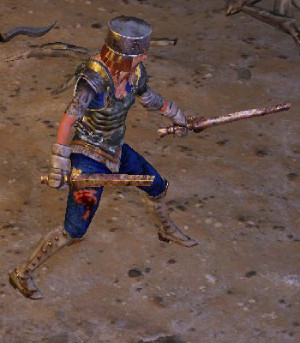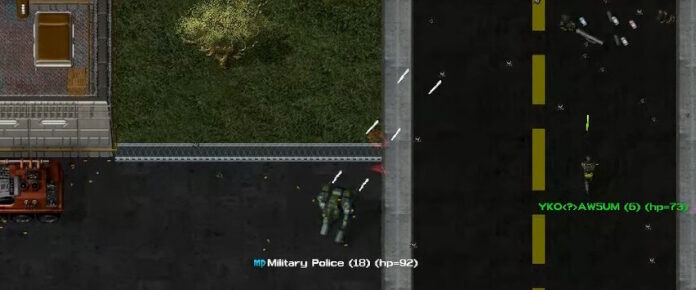
In Path of Exile, don’t despair if you feel like a beginner for a while — the more you play, the deeper it gets. But getting in and getting started needn’t feel daunting, either. That’s why Wandering Wraeclast is running a series of guides for those just getting into this MMOARPG, so you can get the gist enough to enjoy the game. Maybe you’ll dig it so much you’ll dive deeper into the complexities of it (but you don’t even have to do that to keep having fun).
So far we’ve taken a look at classes and explored the beginning basics of gear. That, however, will take you only so far. Before long you’ll have filled all your slots and reached the point you want/need to be much more discerning about what you pick up and quip. And trust me, stopping to look at every single piece of gear is not the sanest option. I’ve tested and confirmed this! What many folks will suggest is to grab yourself a loot filter to make it so that only items you want to show, show. That helps — if you know what you want to show! Whether you decide to use a filter or not, there are some tricks that will allow you to better optimize your gear search so you can spend more time playing and less time sifting through the loot explosions.
 Building by color
Building by color
Before delving further, let’s recap builds and attributes. By now you’ve noticed that the color coding in Path of Exile is pretty prominent. It really is the base of everything. As mentioned in previous guides, the core attributes of the game that each build is dependent on are strength (armor — to take hits), dexterity (evasion — to avoid hits), and intelligence (energy — to cast), represented by red, green, and blue respectively.
You also have multiple combinations of these reflected in your playstyle, such as a caster that evades or a tank that casts. You can build a character that focuses on armor and evasion, armor and energy, evasion and energy, or even a combination of all three instead of just one attribute. That is important for our guides-at-a-glance below.
What you see is what you get
One really nice aspect of PoE is that every non-unique item of a particular type looks the same. (Not so nice if you like the stats of one item but the appearance of another, however.) And not just on your person: It’s great because loot falls openly on the ground and you can identify it at a glance by its appearance. If you are looking for a spiked shield, you’ll see it plain as day all spiky on the ground in front of you. And how it looks on the ground (or in your inventory) is how it looks on you. Even the currency items have their own particular looks. The base names will also be the same, though magical, rare, and unique items have additional prefixes or suffixes after they are identified. If you have loot names on (press z to toggle) you can search that way, which is especially helpful when a loot explosion makes a pile and it’s hard to see what is on the ground.
But how do you know which items you want to search for? You learn which ones benefit your build and just keep an eye out for those. And we’ve got a breakdown for you.
 Armor
Armor
Unlike many games that can have a ton a variations in name and look for all the variety of gear, Path of Exile keeps it pretty simple. Although you always want to check the full description of an item that catches your eye by mousing over it, you can tell at a glance which items to look more closely at by their name or visual. And although the exact names of items change as you level up, some descriptors can give you a clue as to which attributes they focus on. There is some overlap in name type, especially in boots and gloves, so be sure to check the stats. Know that both body armor and shields have inherent movement speed penalties as well.
The chart below offers a breakdown of each name descriptor and its corresponding base attributes (peek at the linked wiki to see a visual of each piece of armor in game!):
| Strength | Dex | Intelligence | S+D | S+I | D+I | |
| Body armor | plate | jerkin leather garb tunic |
robe vest regalia vestments silks |
vest brigandine doublet scale lamellar |
vest tunic coat doublet ringmail chainmail |
vest jacket coat raiment garb armor |
| Gloves | gauntlets | gloves | gloves | gauntles | gloves | mitts |
| Boots | greaves | boots | shoes/slippers | boots | boots | boots |
| Helms | hat helmet burgonet |
cap tricorn hood pelt |
circlet cege |
helm sallet bascinet |
coif helmet crown |
mask |
| Shields | tower | buckler | spirit | round | kite | spiked |
It is important to point out that this emphasizes base attributes; each piece of equipment can have alternate modifiers and unique properties. (Also remember, these properties can often be changed if they don’t quite fit what you want!).
 Weapons
Weapons
If you thought there was a lot of armor, wait until you see the weapons! There is a multitude of categories let alone weapons within them. However, unlike the armor, weapons have no naming conventions; each individual weapon has its own name. Non-uniques at least have the same look throughout each category! The types themselves can be broken down to correspond with specific attributes. Here they’re also separated into melee and ranged to easily discern which weapon/s you’re most interested in for your build and playstyle.
| Strength | Dex | Intelligence | S+D | S+I | D+I | |
| melee | 1H mace 2H mace |
thrusting sword | ax 1H sword 2H sword |
staff stave scepter |
dagger claw |
|
| ranged | bow | wand horn |
Want a little more info? Here I’ve included the general highlights about standard modifiers below as well as a link to the wiki for even more details.
- Axe: high base physical damage and moderate attack speed = higher DPS than swords or maces.
- Bow: low base critical strike chance but moderate physical damage and attack speed = higher DPS than wands; either increased Elemental Damage or increased Critical Strike Chance
- Claw: moderately high base critical strike chance, high base attack speed and life leeches
- Dagger: high base critical strike chance and increased global critical strike chance
- Mace/Sceptre: one-and two handed maces give increased stun duration; scepters give increased elemental damage
- Staff/Staves: moderately high base critical strike chance plus chance to block
- Sword: one- and two-handed have increased accuracy rating; thrusting one-handed gives global critical strike multiplier (only for that weapon)
- Wand/Horn: very high base critical strike chance, low base physical damage and increased Spell Damage
 Accessories
Accessories
Guess what? That’s not even all the stuff you can collect and equip. Exiles have plenty of accessories to adorn themselves with and gain even more power. These, however, can’t quite be grouped like the armor and weapons can. Each individual name denotes a very specific base stat before modifiers. Because there are far too many to list out individually, each accessory includes a link to the specific wiki to see details and visuals.
Amulets – There are 12 regular amulets with their set base properties, but there are 35 corrupted talismans! And that doesn’t even take into account all the unique neck pieces. This accessory has the most variation in modifiers
 Belts – Belts come in nine base types (with a whole slew of uniques!). Each type has its base stat. As for the explicit modifiers that can be rolled on them, most provide strictly defensive bonuses such as increases to resistances or defenses.
Belts – Belts come in nine base types (with a whole slew of uniques!). Each type has its base stat. As for the explicit modifiers that can be rolled on them, most provide strictly defensive bonuses such as increases to resistances or defenses.
Quivers – Quivers can be equipped only in the off-hand slot to work with either with a bow or for unarmed. Yes, you can have the stats and bonuses of a quiver if you elect not to have any weapon other than your fists. Of the nine non-unique quivers, only the ornate quiver has a socket to add gems.
Rings – One of the main properties of many rings are resistances. One special note about rings is that two-stone rings have two resistances, and the unset ring is the only one you can socket with a gem.
Flasks and jewels
The last two types of equipment are flasks and jewels, and each adds even more to your character. Flasks are placed in the 1-5 quickslots and are filled with potions (fully in town, or slowly by killing mobs) used to either restore health or mana or add speed or resistances. Health flasks are squared, mana flasks are more rounded, and special flasks are oval.
Jewels are just like gems you socket in your equipment except you socket them into your passive skill tree instead. Jewels are not as common to find as gems are. As with gems, you can socket and remove any time you want to (as long as you aren’t in battle).
 What if your world changed every three months? What would you do differently? Path of Exile does, and MOP’s MJ Guthrie explores and experiences each new incarnation in Wandering Wraeclast. Join us biweekly for a look into each new challenge league and world expansion — and see whether MJ can finally reach the end of one world before it ends!
What if your world changed every three months? What would you do differently? Path of Exile does, and MOP’s MJ Guthrie explores and experiences each new incarnation in Wandering Wraeclast. Join us biweekly for a look into each new challenge league and world expansion — and see whether MJ can finally reach the end of one world before it ends!














